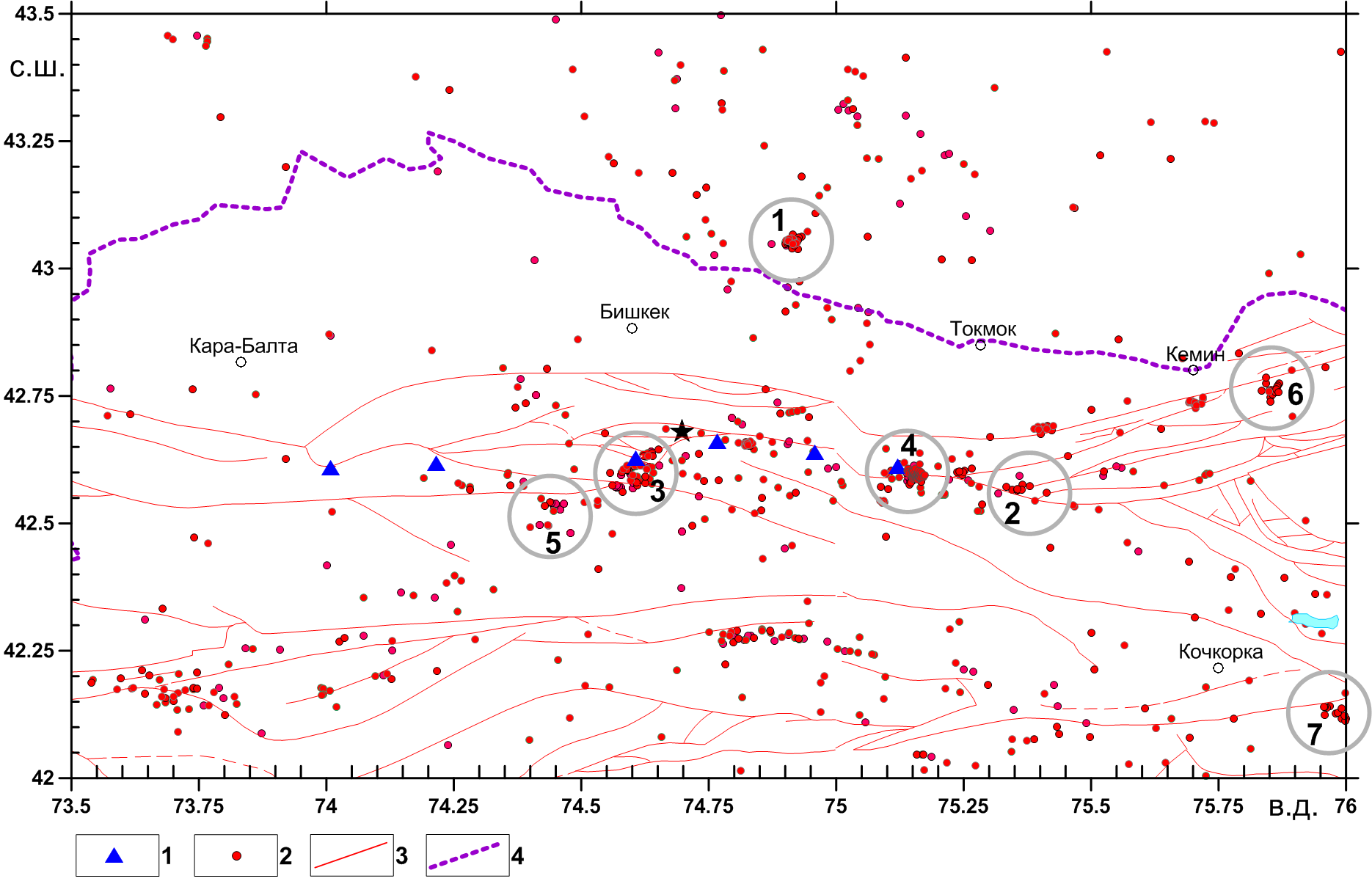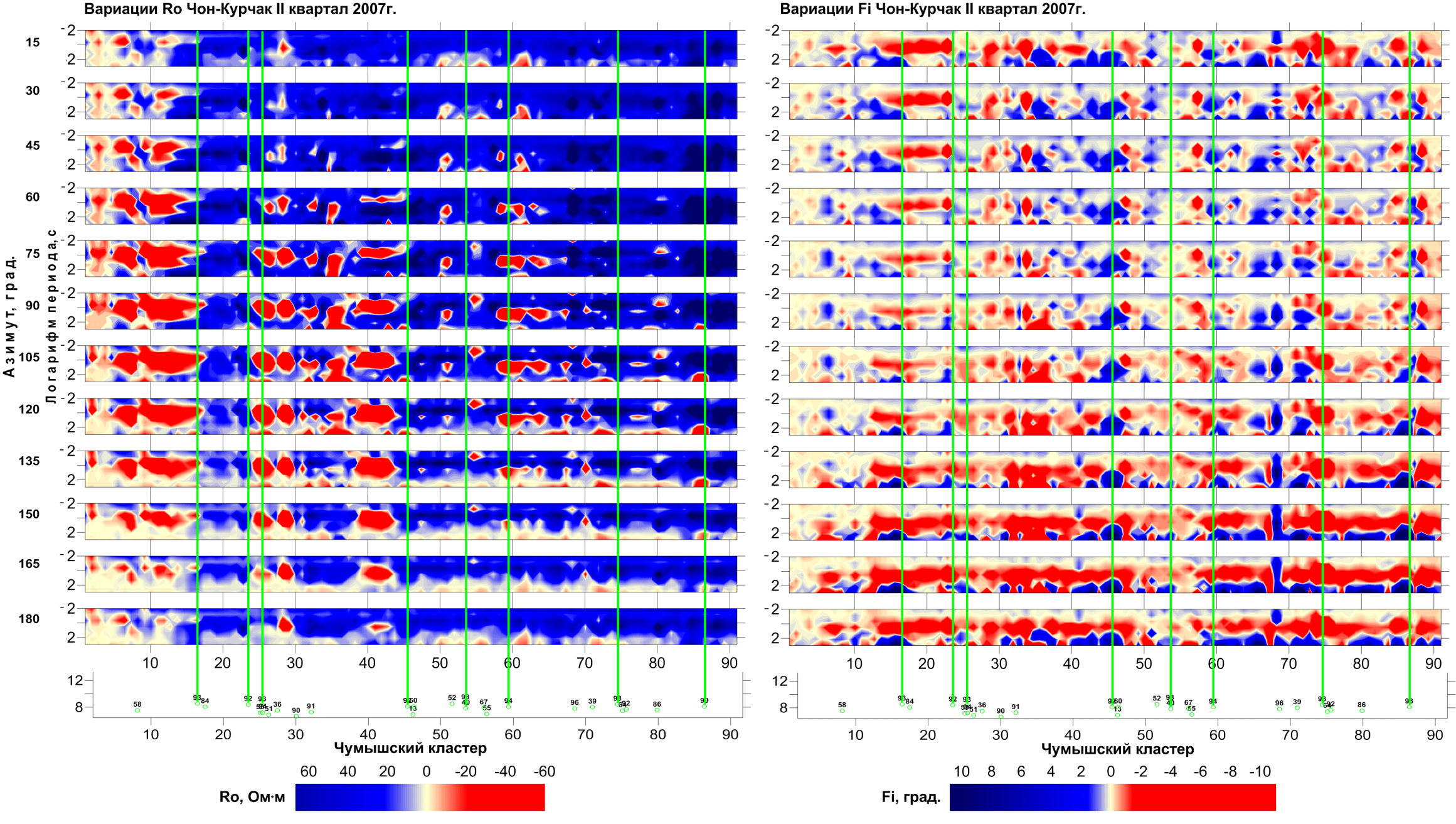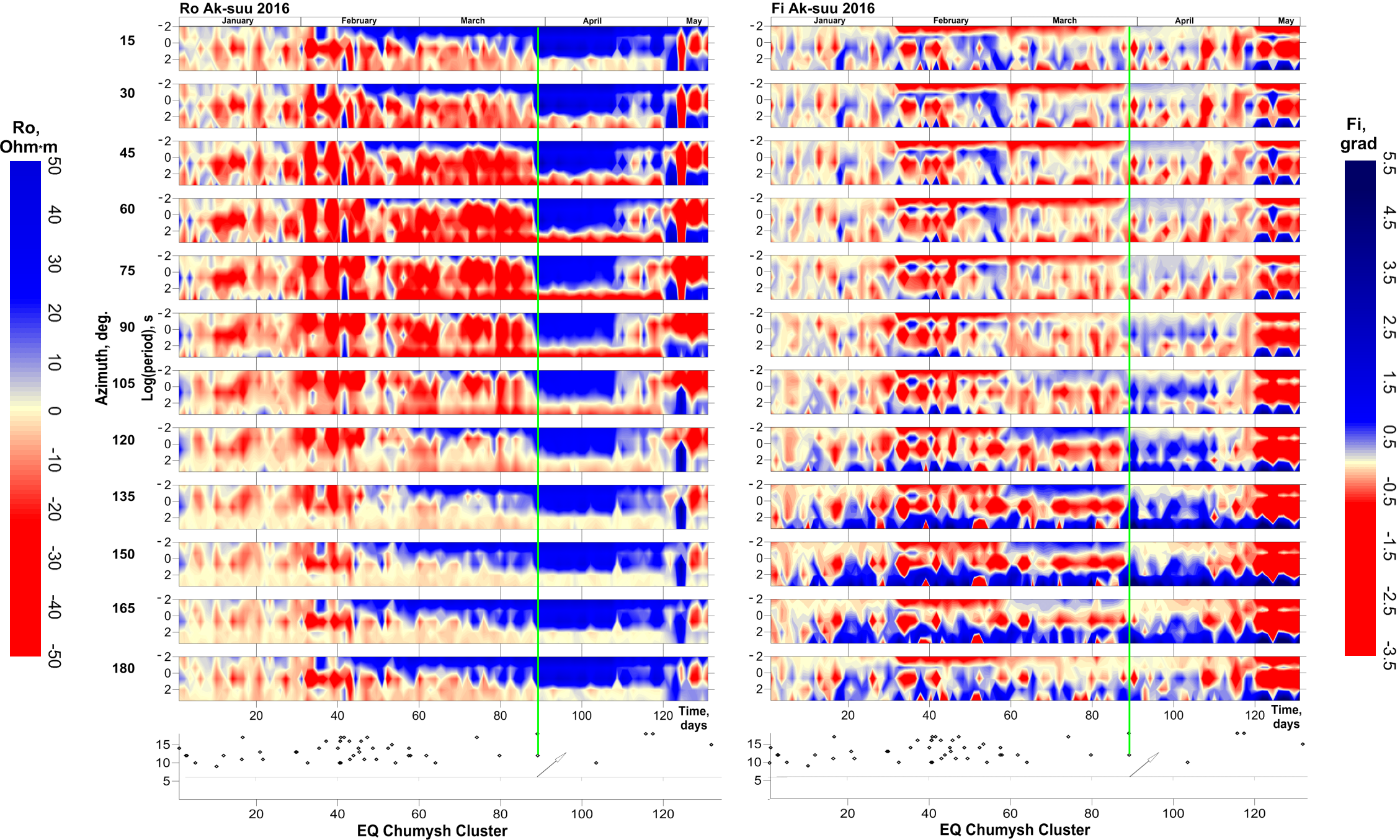Project Title: “Methodological Basis for Assessment of Stressed and
Deformed State of Geologic Environment According to the Results of
Electromagnetic Monitoring of Seismic Regions”
Project Manager: Elena A. Bataleva
Project Period: 2017 – 2019
RFBR Project № 17-05-00654а Report for 2018
Results of the Project № 17-05-00654а in 2017
The most promising for the monitoring of geodynamic processes is the use of electromagnetic sounding methods which ensure effective observations of changes in the physical properties of the Earth’s lithosphere due to their technological effectiveness. This project is aimed at development of methodological basis for assessment of stressed and deformed state of the Earth’s crust and its anisotropic properties. The analysis and interpretation have involved both advanced Russian methods and technologies of electromagnetic monitoring data analysis and interpretation, and theirwidely accepted world analogues as well as the software developed at Research Station RAS and Trofimuk Institute of Petroleum Geology and Geophysics of Siberian Branch of Russian Academy of Sciences (IPGG SB RAS) which was tested on a large volume of experimental data and is mainly directed to optimizationandwaysof visual interpretation of electromagnetic experiment results.
1) We conducted a detailed retrospective analysis of MT-monitoring data for 2007 and 2016 years to find the relationship between unsteadiness of electromagnetic parameters and distribution of seismicity (depth of earthquakes’ hypocenters and their position relative to monitoring sites).

2) We established the dependence between location of seismic events group and variations of electromagnetic (EM) parameters. We confirmed the fact of confinedness of seismic events to the areas with high variation gradients in time-and-frequency series (TFSs). The largest response in TFS variations of electromagnetic parameters is produced by seismic events occurred at 35-65º relative to observation site, the smallest response – sub-latitude.

3) We showed that impedance phases’ TFSs are less informative in comparison to other electromagnetic parameters which may be connected to existence of not only mechanism of fluid redistribution in crack system, but also to the “capacitive” model.

4) We estimated the intervals of MT-sounding periods (effective depths) where the most intensive variations of EM parameters are observed, i.e. the deformation processes are the most pronounced. We compared the results with the data of electromagnetic monitoring of Gorniy Altay.
5) We defined geoelectric characteristics of the Earth’s crust for the sites of profile MT-monitoring on the base of the constructed two-dimensional geoelectric models according to the data of profile MTS observations using the 2D-inversion Rodi – Mackie algorithm (Kentor mini test site).
6) We constructed correlation functions (polar diagrams) for variations of EM parameters with components of luni-solar tidal effects as a criterion for selection of strain-sensing indicator points in the existing system of profile MT observations of Tien Shan for organization of sites of repeated (monitoring) measurements there.

7) We received a lot of new geophysical data and new ideas on the physical nature of interconnection between variations of electroconductivity and modern geodynamic processes in the Earth’s crust of seismic regions.
8) For the first time, for the Central Section (Kentor mini test site) we estimated the values of horizontal magnetic tensor which brings us closer to the creation of a three-dimensional geoelectric model of Kentor mini test site, interpretation of geodynamic processes and receiving of new data on fluid mode and rheology of the Earth’s crust at this part of Bishkek prognostic test site which serves as a main test site for studying of geoelectric structure of active mountain-building areas (using the example of Tien Shan).
Last Updated on Wednesday, 20 February 2019 15:36
